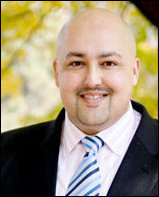
Siva Vaidhyanathan: defender of Virginia’s higher ed status quo
Once upon a time, the credo of American journalism was to “comfort the afflicted and afflict the comfortable.” Today, the attitude of many reporters is quite the reverse: Defend the institutional status quo against Tea Partiers, Trumpkins, rabble-rousers and other yahoos. The bias is especially evident in coverage of that most elite and privileged of establishment institutions, higher ed.
Sandy Hausman, a reporter for public radio station WVTF in Roanoke, broadcast a story recently about the effort by Helen Dragas, a former rector of the University of Virginia and board chair of Partners 4 Affordable Excellence, to make Virginia universities more accountable for skyrocketing tuition. (Full disclosure: Her organization sponsors this blog.)
Staking out a populist position on higher education, Dragas is speaking for millions of Virginia students and parents, present and future, who are paying, or will pay, unprecedented sums for a college education. As Partners 4 Excellence has noted, parents are spending 74% more to send their kids to college than they did 10 years ago. And there is no sign that the increases are slowing down.
But rather than explore the causes driving the runaway Cost of Attendance at Virginia colleges and universities, Hausman used the piece to debunk Dragas. She devoted much of the story to the remarks of Siva Vaidhyanathan, a University of Virginia media studies professor — hardly an unbiased source.
You can listen to Vaidhyanathan yourself. Suffice it to say that his observations, though not entirely without merit, were debatable. Parsing each sentence would be an exercise too tedious to engage in here. But one comment galled me. “The university systems throughout the state of Virginia are running lean,” he said. “They’re serving students very well.”
That’s priceless coming from a professor in UVa’s media studies department. That department lists 15 professors and nine lecturers on staff. Between them, the 24 faculty members are teaching a total of 39 courses this semester. What’s particularly interesting is how the course load is distributed between professors and lecturers. The less prestigious (and presumably less well compensated) lecturers are teaching 19 courses, or an average of 2.1 courses each. The professors are teaching 20, an average of 1.3 classes each.
Ironically, Vaidhyanathan is not listed as teaching a single course this semester. Perhaps he is on sabbatical, I don’t know. He is also listed as the “Robertson Professor of Modern Media Studies,” which suggests that he sits in an endowed chair that supplements his state salary. His total gross pay, according to the Richmond Times-Dispatch state salary database, was $253,000 in 2014. In other words, Vaidhyanathan is paid a salary worthy of the “1%,” not for carrying a heavy teaching load and “serving the students well” but for getting published.
He has written four books. His most recent, published in 2011, was “The Googlization of Everything And Why We Should Worry.” Judging by its Amazon.com blurb, the book actually looks pretty timely and relevant. For purposes of argument, let us grant the proposition that Vaidhyanathan is a brilliant intellect who brings credit to UVa. His employment and that of his media colleagues still is not what anyone could call “running lean.”
In examining the affordability higher ed institutions such as the University of Virginia, one of the many questions we must ask ourselves is this: Is faculty productivity improving or declining? As UVa seeks to recruit more star faculty who bring renown to the institution, what terms and conditions does it grant these superstars? How much time are they asked to teach? To how many professors is UVa paying top-drawer salaries for teaching two or three small-enrollment courses a year and spending the rest of their time writing articles and books?
It goes without saying that Vaidhyanathan and others like him would prefer to blame skyrocketing tuition on cutbacks in state aid to higher ed. The General Assembly has cut back and it does deserve a share of the blame. But reductions in state aid account for only half the increase in tuition, and only a fifth of the total cost of attendance when fees, room, board and other expenses are thrown in.
How many administrators does UVa employ, and what are they paid? How many faculty does UVa employ, and how are they compensated? How much does the institution spend on sports programs? How much on marketing to students with the goal of inflating applications and looking exclusive? How much has the competition for out-of-state students with high SAT scores led the university to upgrade dormitories, dining facilities, gymnasiums, and recreational facilities? There’s not necessarily a right or wrong answer to any of these questions, but they are all worth asking. Too bad Virginia journalists aren’t interested.


